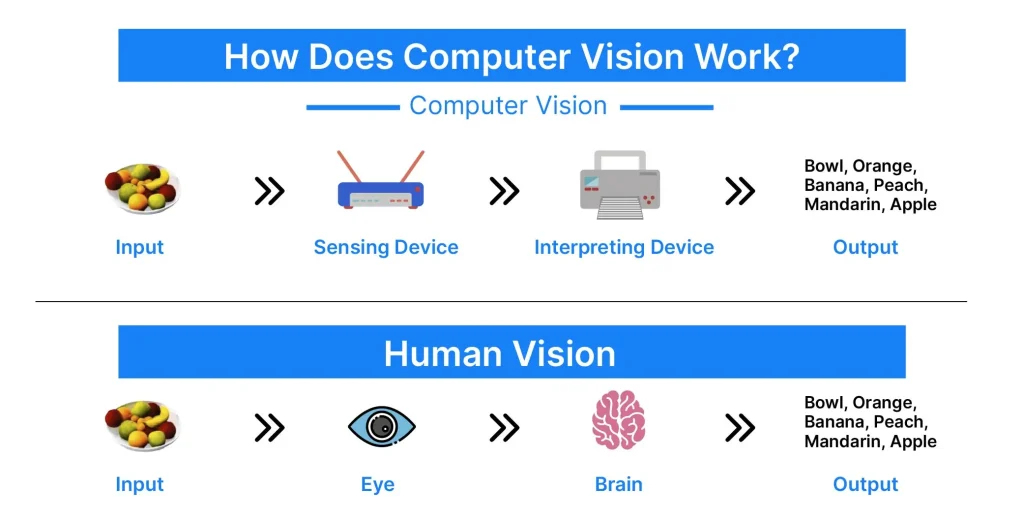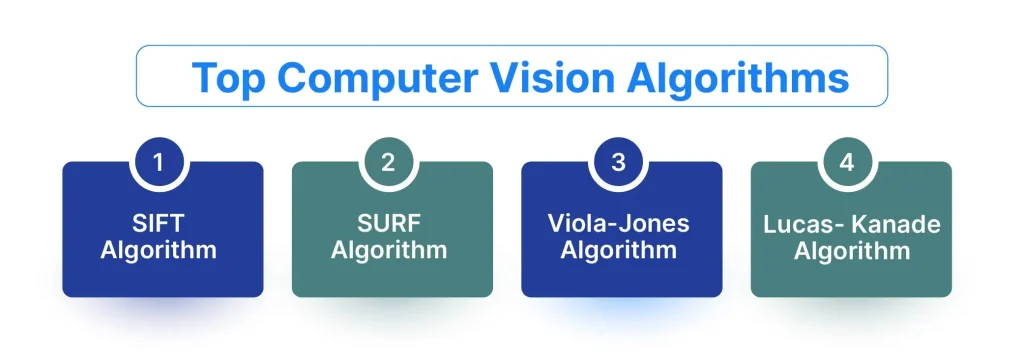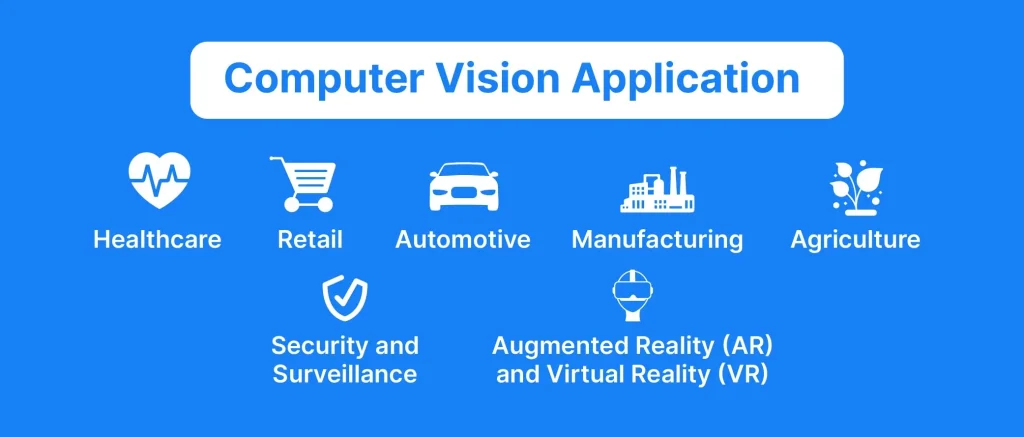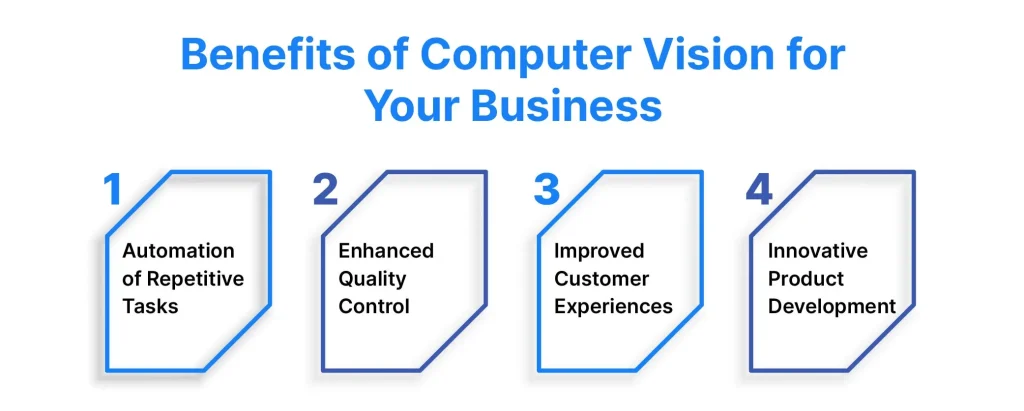Introduction
The study of computer vision makes it possible for machines to mimic the human visual system. It’s a branch of artificial intelligence that gathers data from digital photos or videos and manipulates it to specify characteristics. Throughout the process, images are acquired, screened, analyzed, and identified, and information is extracted. Computers can comprehend and respond appropriately to any visual content thanks to this sophisticated processing. Understanding the nuances of computer vision algorithms and applications is crucial for professionals entering the field of artificial intelligence.
To collect multi-dimensional data, computer vision programs convert digital visual content into explicit descriptions. To help with decision-making, this data is then translated into a language that can be read by computers. Teaching machines to gather data from pixels is the primary goal of this area of artificial intelligence. Computer vision techniques enable machines to interpret and understand visual information, empowering them to perform tasks such as image recognition, object detection, and scene understanding.
The ability of computers to identify and gather information from objects in pictures, movies, and real-world events is known as computer vision. Computers struggle with digesting visual data, in contrast to humans. Computers cannot understand what they see; only humans can, based on our memories and past experiences. Computers use artificial intelligence (AI), neural networks, deep learning (DL), parallel computing, and machine learning (ML) to close the gap between what they see and what they understand. The development of innovative computer vision algorithms and applications has propelled the capabilities of machines to interpret and respond to visual data. The future of AI in software development is intricately tied to the evolution of computer vision algorithms, propelling innovation by enabling machines to interpret and analyze visual data, ushering in a new era of intelligent and adaptive applications.
What is a Computer Vision Algorithm?
Computer Vision (CV) algorithms are the backbone of the transformative technology that allows machines to interpret and understand visual information. At its core, a computer vision algorithm and application is a computational model designed to replicate the human ability to comprehend images and videos. These algorithms analyze patterns, shapes, and colors, enabling machines to make sense of the visual world. Their applications range from object recognition and image segmentation to facial recognition and pose estimation.
The fundamental goal of computer vision algorithms is to enable machines to “see” and interpret the content of images and videos. Image classification algorithms categorize objects within images, while object detection algorithms locate and identify multiple objects in an image or video. Image segmentation algorithms partition images into meaningful segments for detailed analysis. Facial recognition algorithms identify and verify individuals based on facial features, and pose estimation algorithms determine the position and orientation of objects or humans in images or videos.
These algorithms play a pivotal role in numerous industries, reshaping how we interact with technology. In healthcare, they aid in medical image analysis; in automotive, they contribute to autonomous driving systems; in retail, they enhance customer experiences through augmented reality applications; and in security, they improve surveillance and monitoring capabilities.
The Evolution of Computer Vision Algorithms
The evolution of computer vision algorithms has been a journey marked by significant advancements. Initially grounded in traditional image processing techniques, CV algorithms have evolved with the rise of machine learning. Traditional approaches relied on manually crafted features for tasks like object recognition, a process known as feature engineering.
In the realm of computer vision models, deep learning techniques, such as convolutional neural networks (CNNs), have revolutionized image recognition and analysis. The breakthrough came with the advent of deep learning, particularly convolutional neural networks (CNNs), which allowed algorithms to automatically learn intricate features directly from data. This shift from handcrafted features to learned features significantly improved the performance of computer vision systems, especially in tasks like image classification and object detection.
As technology progresses, the evolution of computer vision algorithms continues. Researchers explore novel architectures, optimization techniques, and ways to handle more complex tasks. The ongoing evolution promises even more sophisticated and accurate computer vision applications that will further redefine how machines perceive and interact with the visual world.
How Does Computer Vision Work?
Computer vision involves teaching machines to interpret and make decisions based on visual data. It utilizes algorithms and deep learning models to process and analyze images or videos. Initially, the system is trained on vast datasets, learning patterns and features. During application, the computer processes input data, extracts relevant information, and makes sense of the visual content. This can include object recognition, image segmentation, and understanding spatial relationships. Computer vision finds applications in various fields, from facial recognition to autonomous vehicles, enhancing machines’ ability to comprehend and interact with the visual world.

Top Computer Vision Algorithms
Computer vision algorithms are the visionary force propelling machines into the realm of sight and interpretation. At their essence, these algorithms harness the power of artificial intelligence (AI) to enable machines to comprehend and process visual information, much like the human visual system. As technology advances, the significance of these algorithms becomes increasingly apparent across diverse industries, revolutionizing how we interact with the visual world.

1. SIFT Algorithm
In a 2004 research study, David Lowe from the University of British Columbia proposed SIFT. A digital image’s local features can be found and described using the scale-invariant feature transform algorithm, or SIFT. It identifies important locations and provides them with quantitative data—also referred to as descriptors—that are utilized in object detection and recognition. The descriptors that are acquired through the use of SIFT are resistant to viewpoint, rotation, and illumination changes, allowing the image to appear different even while the objects are the same.
Advantages of the SIFT Algorithm
- SIFT is highly robust to various transformations such as rotation, scaling, translation, and changes in illumination, making it reliable in diverse real-world scenarios.
- SIFT identifies key points in an image based on their distinctive features, allowing for effective matching and recognition even in the presence of noise or partial occlusion.
- SIFT descriptors are localized, providing resistance to clutter and occlusion. They also exhibit invariance to changes in location, scale, and rotation, contributing to the algorithm’s adaptability.
Disadvantages of SIFT Algorithm
- SIFT involves intensive computations, particularly during the keypoint detection and descriptor applications on resource-constrained devices.
- The original SIFT algorithm was patented, which limited its use in commercial applications without proper licensing. While there are alternative algorithms available, this issue can be a concern in certain contexts.
- SIFT may be sensitive to noise in images, impacting the accuracy of keypoint detection and descriptor generation. Preprocessing steps may be required to mitigate these sensitivity generation stages. This can lead to increased processing time, making it less suitable for real-time
2. SURF Algorithm
A proprietary feature detector and descriptor algorithm called “accelerated robust features,” or “SURF” is primarily utilized in computer vision for applications involving object detection, categorization, picture registration, and reconstruction. Although SURF is an approximation of SIFT, it is faster than SIFT by several orders of magnitude and produces superior results while maintaining the quality of the identified points. The study co-authored by H. Bay, A. Ess, T. Tuytelaars, and L. Van Gool served as its foundation. Compared to SIFT, SURF is more resilient to picture alterations.
Advantages of the SURF Algorithm
- SURF (Speeded-Up Robust Features) is designed for efficiency, providing faster computation compared to some other feature detection algorithms like SIFT. This makes SURF more suitable for real-time applications.
- Similar to SIFT, SURF is invariant to scale and rotation changes in images, allowing it to recognize objects under different orientations and sizes.
- SURF demonstrates good robustness to noise, enabling effective feature detection even in images with a certain level of noise.
Disadvantages of the SURF Algorithm
- While SURF is invariant to moderate rotations, extreme rotation changes can still affect its performance. This limitation may require additional considerations for certain applications.
- Similar to SIFT, SURF has been patented, which may restrict its usage in commercial applications without appropriate licensing.
- While SURF features are generally robust, they may be less distinctive than those generated by some other algorithms, potentially leading to challenges in unique object identification.
3. Viola-Jones Algorithm
Paul Viola and Michael Jones, two computer vision researchers, created the Viola-Jones object detection algorithm in 2001 to address the face detection issue. However, it can also be trained to recognize different object classes in photos in real time. Although it takes a while for this method to train on a particular dataset, it is capable of real-time face detection with remarkable speed and accuracy. The Viola-Jones algorithm recognizes faces in photos by using Haar-like features.
Advantages of Viola-Jones Algorithm
- Viola-Jones is known for its high speed in face detection, making it suitable for real-time applications. The algorithm utilizes a cascaded structure and integral images to efficiently scan and identify faces in images.
- The Viola-Jones algorithm exhibits a degree of robustness to changes in lighting conditions, allowing it to perform reasonably well in environments with varying illumination.
- The training process for Viola-Jones is relatively quick compared to some other object detection algorithms. This efficiency is particularly beneficial when training large datasets.
Disadvantages of Viola-Jones Algorithm
- The real-time face detection speed of the system is still very outstanding, however, it may get slower to train as the amount of the training dataset grows.
- While highly effective for face detection, Viola-Jones may be less versatile in detecting objects with diverse shapes and characteristics. It is primarily designed for binary object classification.
- The algorithm is not inherently rotation-invariant, meaning it may not perform as well when faced with images containing objects at different orientations. Additional techniques may be required for rotation-invariant detection.
- The performance of Viola-Jones is heavily reliant on the quality and representativeness of the training data. Inadequate or biased training data can lead to suboptimal results.
4. Lucas- Kanade Algorithm
The Lucas-Kanade algorithm is a widely used method in computer vision for optical flow estimation. Developed to track the motion of objects in a sequence of images, it assumes that the flow is essentially constant in a local neighborhood. The algorithm employs partial derivatives to model the spatial gradients of intensity changes over time. By formulating a system of linear equations, Lucas-Kanade estimates the optical flow parameters for each pixel, providing a dense representation of motion fields.
One key advantage of the Lucas-Kanade algorithm lies in its efficiency, making it suitable for real-time applications. However, it may encounter challenges when dealing with large displacements or in regions with complex motion patterns. Over the years, variations and improvements to the original algorithm have been proposed, contributing to its adaptability across different scenarios in video analysis, object tracking, and motion estimation in computer vision applications.
Advantages of Lucas- Kanade
- The Lucas-Kanade algorithm is computationally efficient, making it suitable for real-time applications where quick optical flow estimation is required.
- The algorithm assumes local constancy of motion, making it effective for estimating optical flow in small image regions. This characteristic is particularly useful when dealing with objects moving independently.
- Lucas-Kanade is relatively straightforward to implement, and the simplicity of the algorithm makes it accessible for practical use in various computer vision applications.
Disadvantages of Lucas- Kanade
- The algorithm’s reliance on the assumption of local constancy of motion can lead to inaccuracies, especially in the presence of non-uniform motion or large displacements.
- Lucas-Kanade can be sensitive to noise in the image, which may affect the accuracy of the computed optical flow vectors.
- The algorithm may struggle to handle discontinuities or rapid changes in motion, as it assumes a smooth flow within the local neighborhood.
Computer Vision Application
Computer vision applications stand as remarkable examples of how machines can interpret and interact with the visual world. These applications leverage advanced algorithms and machine learning to enable machines to understand, process, and make decisions based on visual data, much like the human visual system. The versatility of computer vision finds expression in a multitude of fields, revolutionizing industries and shaping the way we perceive and interact with technology. Computer vision applications span diverse domains, with notable examples including:

Healthcare
From healthcare diagnostics to autonomous vehicles, the impact of advanced computer vision algorithms and applications is reshaping industries globally. Computer vision applications in healthcare play pivotal roles in transforming the medical landscape, and enhancing diagnostics, treatment, and overall patient care. In healthcare, computer vision and chatbots join forces to elevate patient care, employing advanced image analysis for diagnostics and smart chatbots for streamlined accessibility, appointments, and support.
In the medical field, computer vision is widely utilized. Examining pictures, scans, and photos is crucial to medical diagnosis. Contemporary medicine routinely analyzes pictures from ultrasound, MRI, and CT scans; computer vision technologies promise to streamline this process while preventing incorrect diagnoses and lowering treatment costs. Instead of taking the position of medical experts, computer vision aims to support and ease their work and decision-making. By highlighting pertinent regions on 2D or 3D scans and colorizing them to make studying black-and-white pictures easier, image segmentation aids in diagnostics. Image processing algorithms play a crucial role in refining raw visual data, ensuring clarity and precision in the insights derived by computer vision models. Here is an Image Segmentation of Lung CT scans.
Retail
Automated checkout systems use computer vision to identify products and streamline the purchase process. Virtual try-on applications allow customers to visualize products before making a purchase decision.
Automotive
Advanced driver assistance systems (ADAS) use computer vision for features like lane departure warnings and automatic emergency braking. Autonomous vehicles rely on computer vision for navigation, obstacle detection, and real-time decision-making.
The artificial intelligence application case that has garnered the most media attention recently is self-driving automobiles. The perception that autonomous driving is more futuristic than the actual effects of the technology probably explains this better. It contains several machine learning challenges, but computer vision plays a key role in solving them. For instance, the algorithm that controls the car—the so-called “agent”—must always be cognizant of its surroundings.
Manufacturing
Quality control processes benefit from computer vision for inspecting products, identifying defects, and ensuring consistency. Robots equipped with computer vision capabilities enhance precision and efficiency in assembly lines.
Security and Surveillance
Facial recognition systems enhance security by identifying and verifying individuals. Video analytics powered by computer vision detect anomalies and potential threats in surveillance footage.
Augmented Reality (AR) and Virtual Reality (VR)
AR applications overlay digital information onto the real world, enhancing user experiences. VR simulations utilize computer vision for realistic interactions within virtual environments.
Agriculture
Computer vision aids in crop monitoring, disease detection, and yield prediction, optimizing agricultural practices. Drones equipped with computer vision contribute to precision agriculture through aerial monitoring.
As technology continues to advance, the spectrum of computer vision applications will inevitably expand, offering innovative solutions across diverse sectors. From enhancing medical diagnostics to revolutionizing how we shop, work, and travel, computer vision applications are at the forefront of the AI revolution, bringing a new dimension to our visual experiences.
Benefits of Computer Vision for Your Business
The integration of computer vision into business processes brings a myriad of benefits, driving efficiency, enhancing decision-making, and unlocking innovative possibilities. As a transformative technology, computer vision leverages advanced algorithms and machine learning to interpret and analyze visual data, providing businesses with valuable insights and automation capabilities. Here are key advantages that computer vision brings to your business:

Automation of Repetitive Tasks
Computer vision automates mundane and repetitive tasks, reducing the need for manual intervention. This leads to increased operational efficiency and cost savings.
Enhanced Quality Control
In manufacturing and production, computer vision systems can identify defects and inconsistencies in real time, ensuring high-quality output and minimizing defects.
Improved Customer Experiences
Retail businesses benefit from computer vision through personalized shopping experiences, virtual try-on solutions, and efficient checkout processes, enhancing customer satisfaction.
Innovative Product Development
Businesses can leverage computer vision for product innovation, creating new solutions and services that cater to evolving consumer needs.
The adoption of computer vision technologies empowers businesses to stay competitive in an increasingly digital landscape. From optimizing internal processes to enhancing customer interactions, the benefits of integrating computer vision into business operations are profound, offering a pathway to efficiency, innovation, and sustainable growth.
IntellicoWorks - Best Choice for AI Consulting Services
IntellicoWorks stands out as the optimal choice for businesses seeking innovation due to its unwavering commitment to excellence and transformative solutions. With a team of seasoned professionals possessing deep expertise in emerging technologies, IntellicoWorks tailors its offerings to meet the unique needs of diverse industries, ensuring a strategic alignment with clients’ goals. The company’s proven track record of success underscores its ability to drive tangible results and foster innovation across various sectors. Our company excels in providing AI consulting services, guiding businesses through the strategic integration of artificial intelligence for optimal growth and innovation. As a leading provider of AI solutions, our focus extends to the intricate world of computer vision algorithm and application development.
The focus on scalability allows clients to innovate and grow seamlessly, unencumbered by technological limitations. With a relentless commitment to continuous improvement and a forward-thinking mindset, we emerge as a strategic partner, not just a service provider, dedicated to propelling businesses toward success in an ever-evolving landscape.
Conclusion
The synergy of computer vision machine learning techniques empowers systems to continually enhance their ability to recognize and understand complex visual patterns. We’re still far from perfecting computer vision, especially with the great recent development. Nonetheless, a number of businesses and healthcare facilities have already discovered methods to use CNN-powered CV systems to solve practical issues. Furthermore, it’s unlikely that this tendency will halt very soon.
Professionals specializing in computer vision algorithms and applications play a pivotal role in driving innovation and efficiency across diverse sectors. The ability to interpret and understand visual data opens avenues for innovation across various industries. As technology continues to advance, the impact of computer vision on our daily lives is poised to grow, promising a future where machines see and comprehend the visual world with unprecedented accuracy and sophistication. Stay tuned for the next wave of innovations as computer vision continues to redefine the boundaries of what machines can achieve. In conclusion, computer vision algorithms and applications represent a transformative force in the realm of artificial intelligence.
Elevate Your Business Strategy With Our AI Consulting Services Today!
Follow IntellicoWorks for more insights!


